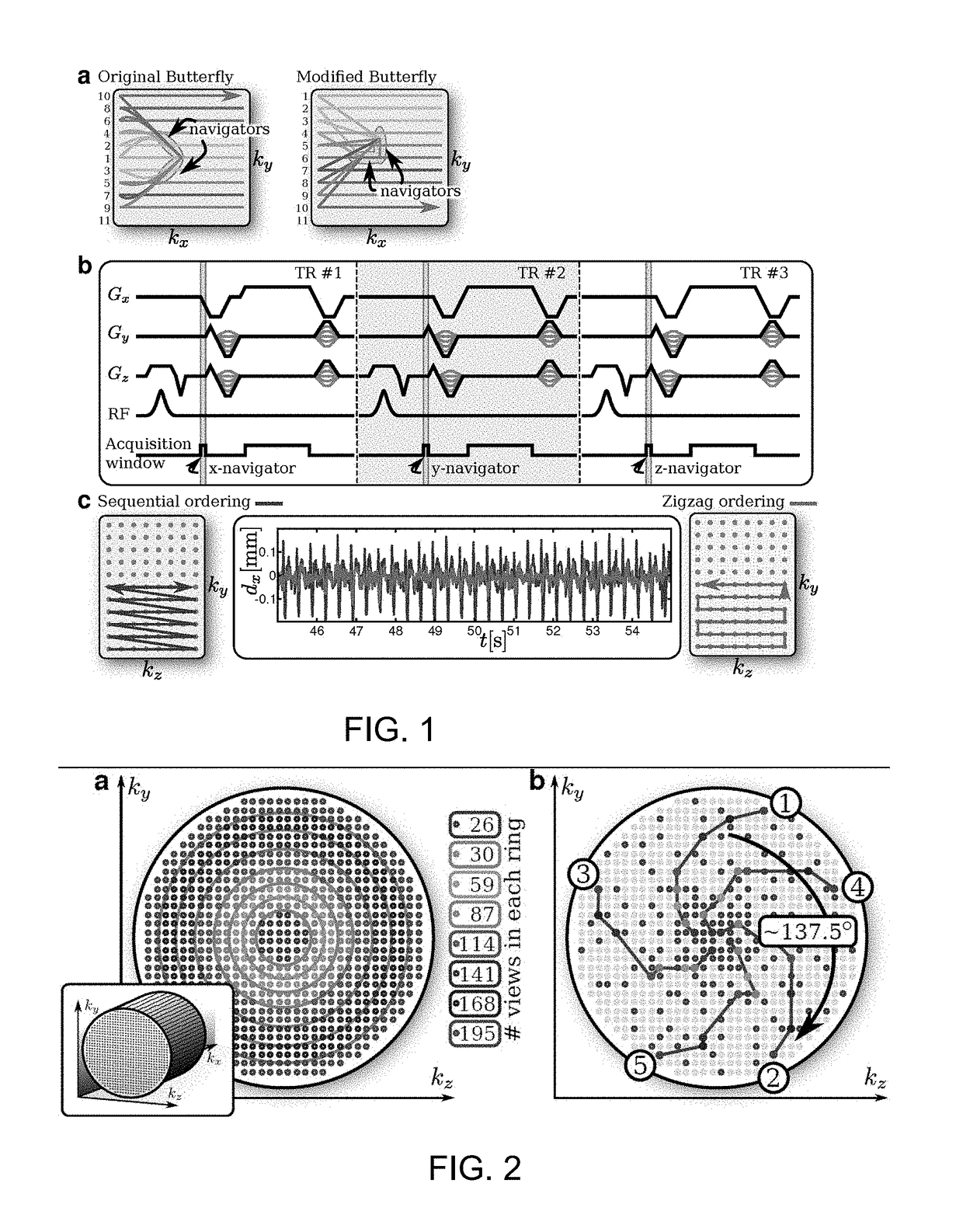Nonrigid motion correction in 3D using autofocusing with localized linear translations
a motion correction and non-rigid technology, applied in the field of magnetic resonance imaging, can solve problems such as unsatisfactory imaging artifacts
- Summary
- Abstract
- Description
- Claims
- Application Information
AI Technical Summary
Benefits of technology
Problems solved by technology
Method used
Image
Examples
Embodiment Construction
[0029]Motion artifacts can be reduced significantly with breath-held scans. However, this can be difficult to implement in practice, especially when imaging pediatric patients or when scan time is greater than 20-30 seconds. Costly sedation or anesthesia procedures are required for pediatric patients who are unable to achieve a sufficiently long breath-hold. Data acquisition can also be gated using measurements from respiratory bellows or electrocardiography. With these methods, scan duration is increased and the data is still sensitive to bulk motion. Countless motion prevention and correction techniques have been developed. These algorithms are applied during the scan or in the reconstruction. For more flexibility, embodiments focus on free-breathing studies and on suppressing motion retrospectively in the reconstruction.
[0030]In order to correct for non-rigid motion, an accurate motion model must be used. Bulk translational and rotational motion estimation are sufficient for rigi...
PUM
 Login to View More
Login to View More Abstract
Description
Claims
Application Information
 Login to View More
Login to View More - R&D
- Intellectual Property
- Life Sciences
- Materials
- Tech Scout
- Unparalleled Data Quality
- Higher Quality Content
- 60% Fewer Hallucinations
Browse by: Latest US Patents, China's latest patents, Technical Efficacy Thesaurus, Application Domain, Technology Topic, Popular Technical Reports.
© 2025 PatSnap. All rights reserved.Legal|Privacy policy|Modern Slavery Act Transparency Statement|Sitemap|About US| Contact US: help@patsnap.com



